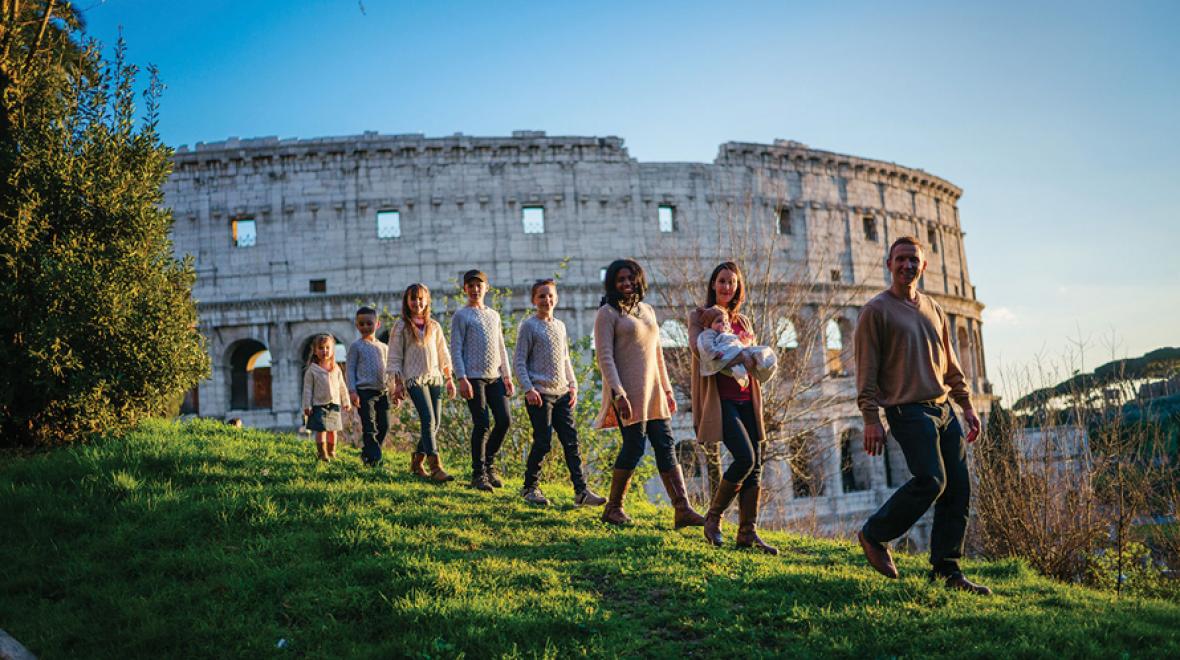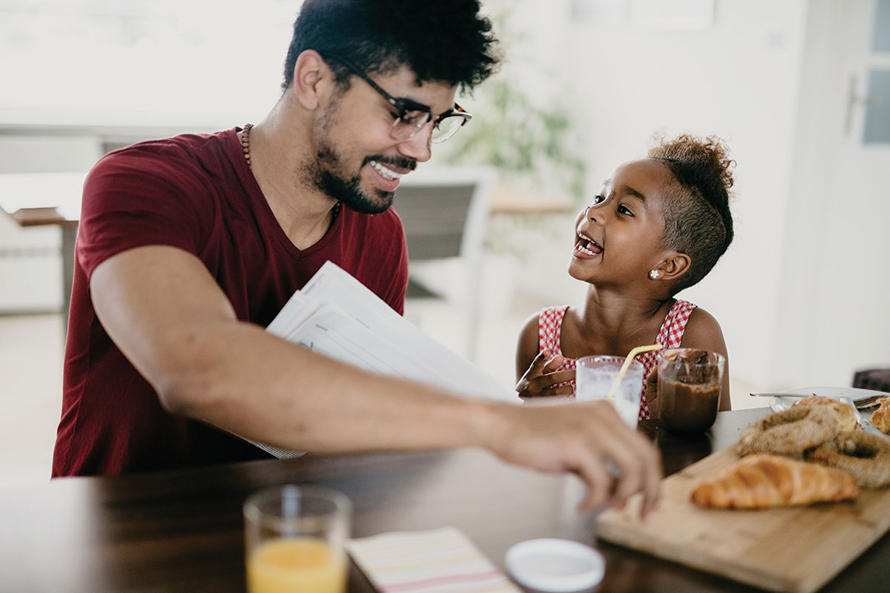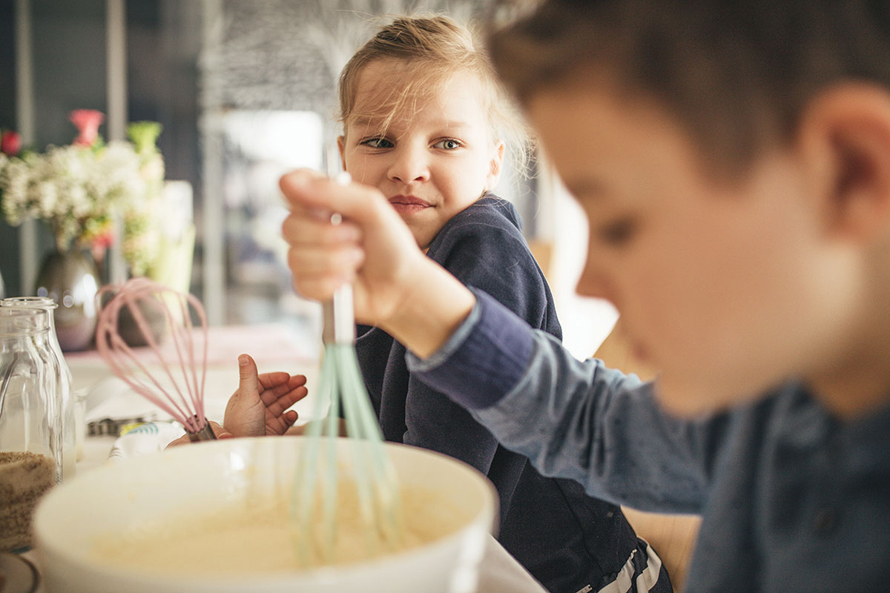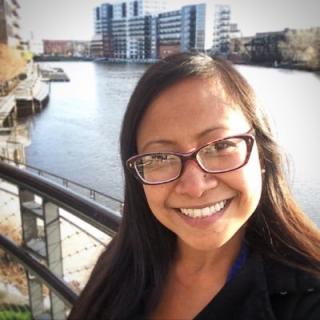
Photo:
One of the more notable worldschooling families, the Dennings have nearly 12,000 followers on Instagram. Photo credit: WorldSchoolFamily.org as taken by Mike Kire
The trees whizzed by as our car wound its way along the roads of southern Washington. On the horizon: Mount St. Helens peeking around hills and through trees. My kids pointed excitedly at the mountain, calling out what they saw.
Earlier that day, we had read a book about the Mount St. Helens eruption in 1980 and visited the Mount St. Helens Visitor Center, where they saw pictures of what happened when the volcano exploded. We learned about concepts like seismic vibrations and shifting tectonic plates, and saw models of Mount St. Helens before and after the eruption. Now, my kids were excited to be able to see the mountain and the effects of its eruption in person.
Like many families in Washington state, we were spending a summer weekend exploring our state and camping as a family. But we were also using this trip as a learning opportunity. As a worldschooling family, we were taking time to incorporate learning into our travel experiences.
What is worldschooling?
Originally coined by well-known worldschooler Eli Gerzon in 2008, the term “worldschooling” has been quickly gaining popularity. At its most basic level, worldschooling uses travel as a basis for a child’s education. Gerzon himself describes worldschooling as “when the whole world is your school, instead of school being your whole world.”
The concept is tied to homeschooling, which has rapidly grown in popularity in the past decade — more than 1.5 million kids were homeschooled in 2007 with 3 percent of the school-age population homeschooled in the 2011-12 school year. Worldschooling takes homeschooling a step further by incorporating travel into education.
But if I’ve learned anything in my own research, it’s that every family has its own interpretation of worldschooling. Some see it as an extension of homeschooling, where the learning is done both on the road and at home. Others use worldschooling as a supplement to traditional schooling by making their vacations more educational.
Rob Taylor, a father of 6- and 3-year-old sons, uses worldschooling as a means to enhance family trips around the Pacific Northwest and abroad. Based primarily in Suquamish, Washington, he has been worldschooling his sons since last year.
“I think it’s our job as parents to not only use travel as a means of fun, but also a tool for teaching our kids to be human beings,” says Taylor, who is a writer for a popular family travel website, 2TravelDads.
For Phoenix S., a homeschooling parent in Seattle, incorporating a global perspective is important for her daughter’s education, especially since Phoenix herself is part of a multicultural family of Asian and African descent.
“I grew up biculturally and transcontinentally,” she says. “I can’t imagine raising and teaching my daughter any other way.”
For my own family, the choice to worldschool corresponds with our family’s current endeavor to travel around the world for three years. Rather than enrolling our two kids in traditional schools in different countries, we are opting to use worldschooling as our primary way to educate them.
But as I prepared to worldschool, I learned more and more about how there’s really no one right way to do it.

How do you worldschool?
Some families follow a specific educational philosophy, from the imaginative play-focused Waldorf philosophy to a child-led, nonstructured unschooling approach. Other families enroll their children in online school. Still others cobble together their own approaches, taking bits and pieces from their favorite educational models to make one customized to their own kids.
Taj Munson, a Seattle father of two, let his kids’ ages inform his family’s take on worldschooling.
“My kids are early enough in their education where there is a lot of foundational stuff that we can still help them with,” says Munson, whose children are 5 and 8. “We’re not worrying too much about extremely rigorous academics.”
The more my husband and I learned about worldschooling, the more we realized how many resources were available to us. Online learning websites like Khan Academy and Time4Learning make it easy for parents to have access to prepared curricula, and websites like Lynda.com and Mango Languages offer online courses that are free and available to Seattle Public Library members.
Also online: a community of parents navigating the world of worldschooling.
“I really rely on Facebook groups to connect with other worldschooling families and get ideas,” says Seattle mom Christina Garcia, who worldschools her son. Garcia also relies on her own experience in education and those of her friends who teach “to see what matches the personality and learning style of my son.”
So, does it work?
It’s easy to be skeptical of an education model outside the chalkboards-and-desks approach many of us grew up with. So, does it really work? Will kids really get a good education from worldschooling?
Mary Jereczek, a teacher at Ballard High School, thinks so. She recognizes how worldschooling can benefit children by helping them gain an appreciation of different cultures.
“It’s so important to be able to understand other people and other cultures,” Jereczek says. “We need to be able to look at things through other people’s eyes.” Worldschool can help kids be less isolated and more in tune with a world outside their everyday lives, she says.
Angelina Vasquez, a teacher in Mukilteo, echoes that sentiment: “Having that additional experience gives students more understanding of cultures in the world and how to interact with people.”
But both Vasquez and Jereczek acknowledge that there may be some drawbacks to worldschooling. For one thing: a lack of stability.
“Worldschooling may be something that disrupts the education [of a child who needs more stability],” says Jereczek. “[That child] might actually do better in a more traditional setting.”
This applies to testing, too.
“High-stakes testing is a big part of our educational system,” Vasquez says. “Not being prepared for that may be a drawback for families who worldschool, especially for those planning to transition their kids back to traditional school.”
When our own family decided to embark on a life of full-time travel and worldschooling, my husband and I worried about that. We’re also concerned about what worldschooling will mean in terms of education, both social and academic.
For my 8-year-old, worldschooling means saying goodbye to her close school friends. For my 5-year-old son, it means missing out on the traditional experience of the first day of kindergarten.
Still, despite these drawbacks, I believe my kids will learn so much more from their travels than what they can learn in a classroom. And so, off we go!
But how do you afford it?
As we planned our trip, my husband and I thought a lot about how we would be able to afford worldschooling. We’re fortunate to work remotely as we travel, which will help finance our trip.
Other worldschooling families we know are renting out their houses on Airbnb; house-sitting or pet-sitting as they travel; or finding deals on airfare or hotels, including working for airline companies to get free airfare. Their strategies are as diverse as the ways they’re teaching their kids.
Fortunately, you don’t have to pack up and travel to get some of the benefits of worldschooling. One idea: Read.
“We check out books from the local library on the topics of our destination,” says Portia Smith, an Arlington, mother of two and a lifestyle and travel blogger at Obsessed by Portia.
Smith uses worldschooling to supplement her children’s traditional school education. “We utilize paper maps so the kids can understand the geography of an area,” she says. “At the end of the day, we chat about the places we visited and what stood out the most.”
The family of Marcie Cheung, a mother of two and blogger at Marcie in Mommyland, makes a point of participating in cultural activities when they travel. A recent trip to Maui saw her preschoolers making their own ink and stamping traditional Hawaiian kapa cloth as part of a cultural tour.
Immersive experiences like those don’t require a plane ticket, either. (See the sidebar for six ideas on how to bring the world closer to home without packing your bags.)
What’s next
I know that over the next three years of our trip, my family will change and grow as we travel. How could we not? But no matter where we are in the world, we plan to use our lessons from traveling to teach our kids.
In fact, we’re already doing it.
Weeks after our visit to Mount St. Helens, my kids are still talking about what they learned from that visit, even telling friends about the trip. For a parent like me, it’s moments like these that make me smile.

Six ways to bring the world closer to home
|











